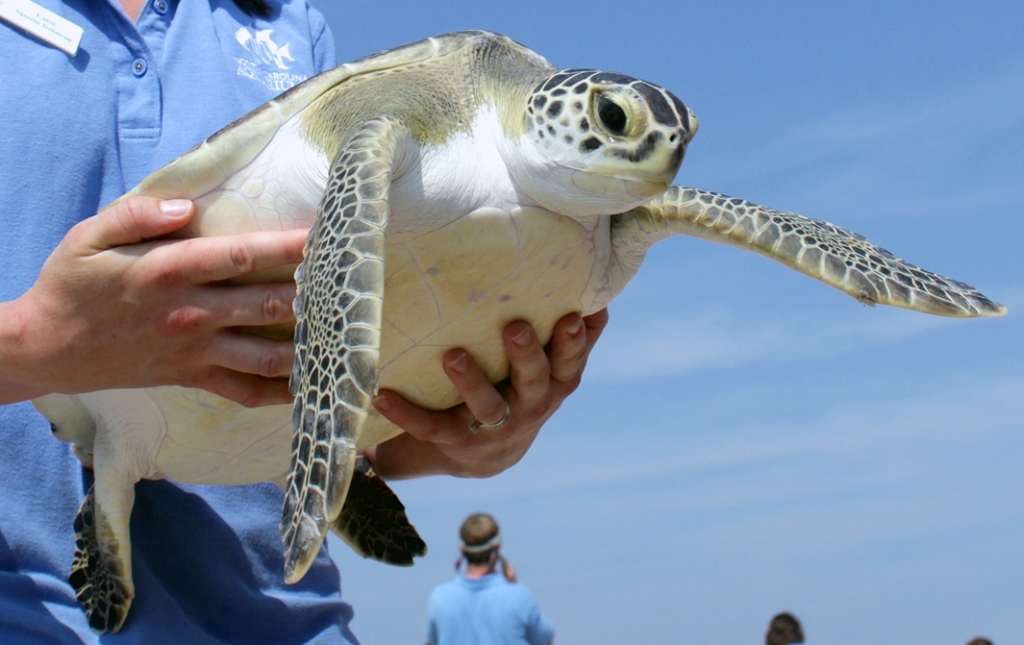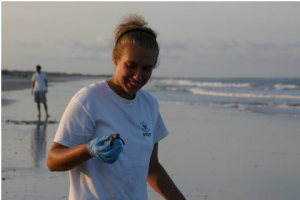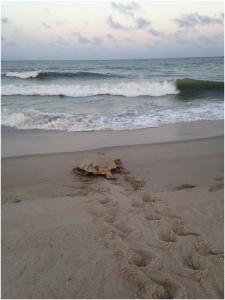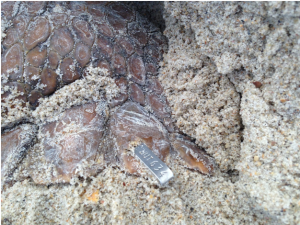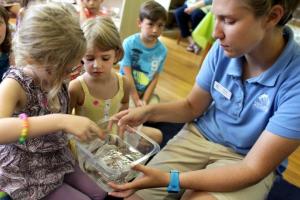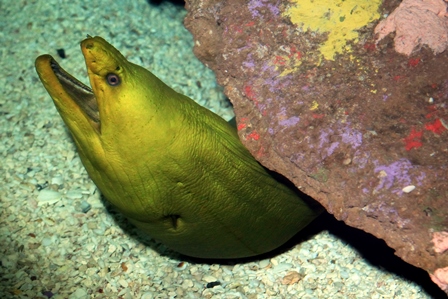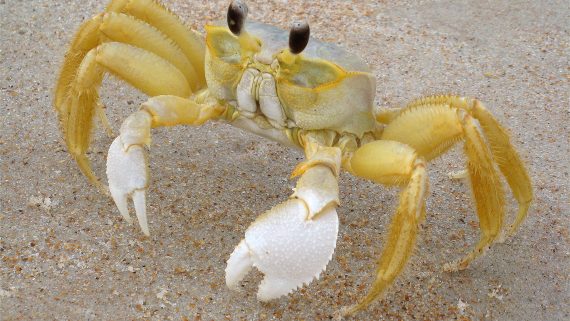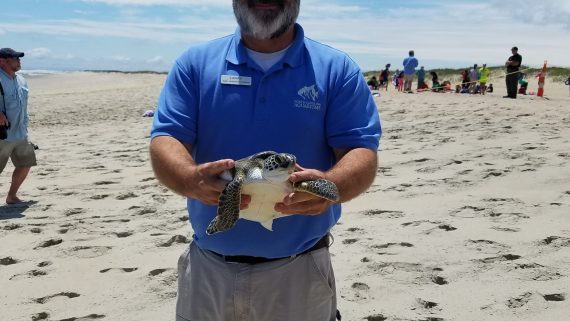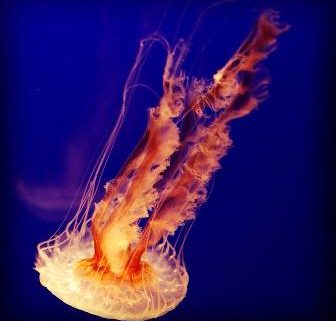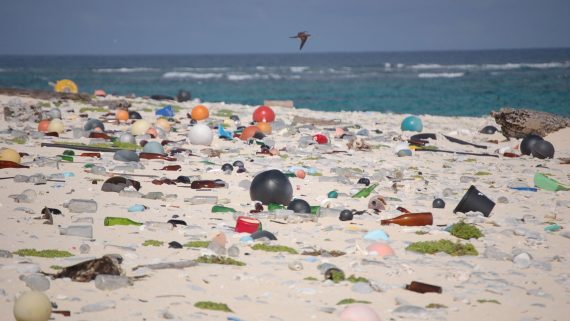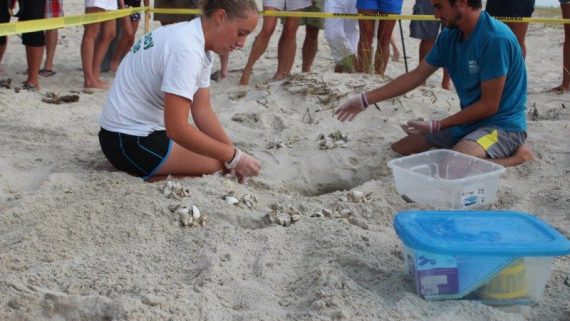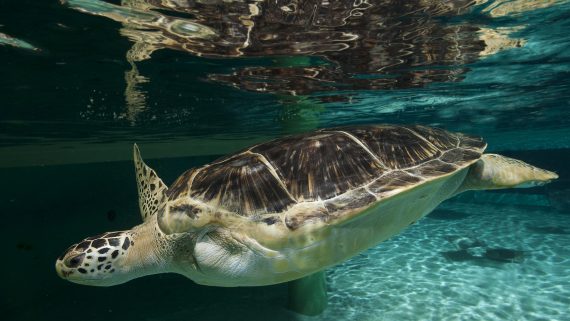From Volunteer to Turtle Ranger
This week we are meeting Alyssa to learn about caring for sea turtles in the wild.
Hi there! My name is Alyssa and I am a Park Ranger at Fort Fisher State Recreation Area. I’m not originally from North Carolina. I moved here from Pennsylvania about 4 years ago for an internship that began my career in environmental science and education.
The first turtle I ever saw nesting was in late May on a full moon night. We saw a dark shadow making its way from the water slowly up the beach. She crawled right up to the dune line leaving a trail in the sand behind her. Then she stopped, wiggled around throwing sand everywhere and then began to dig a hole using each of her rear flippers like hands. Taking one scoop at a time until it was just right. Once she was done, she laid her eggs, covered it back up and headed back out to the ocean. It is one of the most amazing things I’d ever witnessed. An animal that spends the majority of its life at sea to come up on shore for a few hours in the middle of the night and I was lucky enough to see it!
It was on Bald Head Island where I saw that turtle lay her eggs. I worked at the Bald Head Island Conservancy as a Sea Turtle Intern and subsequently as the Sea Turtle Program Coordinator. It was here that I turned to a nocturnal life schedule. My job was to stay awake from 9 PM to 6 AM and drive up and down the beach looking for nesting loggerhead sea turtles. Loggerhead sea turtles are the most abundant nesting species in North Carolina and they nest up and down our entire coast. Sadly they are a threatened species which means their populations are just not where they should be. Our job was to collect information about the female turtles that came up on to the beach to lay their eggs. We took carapace measurements, applied flipper and PIT tags and took dermal samples. Simply put this means that we measured their shell to see how big they were and gave them tags so that we could identify them in the future.
The dermal sample was a small skin sample that was shipped off to the University of Georgia for genetic studies. Once the mother turtle left the beach and went back out to the ocean; we placed a cage over her nest so we could protect her eggs from predators. About 50-70 days later the nest would hatch and we would take an inventory count to see how many eggs hatched, how many didn’t and if there were any live or dead hatchlings left in the nest. This helped us determine the success of the nest. You can see some of this work in this video:
I have also had great opportunities to work at the North Carolina Aquarium at Fort Fisher doing education and outreach. Here I was able to teach aquarium visitors all about the amazing feats that a lot of our sea turtles and marine animals face every day, how they overcome them and most importantly how we can help!
Now I work as a Park Ranger at Fort Fisher State Recreation Area. Here I combine all that I have done in the past. My job here is to help educate, conserve and protect our natural resources. Those natural resources include everything from the trees in the maritime forest to the flowers in the dunes, the birds in the marsh to the sea turtles in the ocean and everything in between. It is still a very important part of my job that I help to teach people how to best become a steward of our environment and encourage everyone to get outside and see what’s in our backyards.
I hope you enjoyed meeting Alyssa and learning more about her journey working with sea turtles. Our hatchlings are from the Fort Fisher State Recreation Area which means Alyssa helped protect them while they were still in the nest. We are very thankful for her hard work. The turtles are getting bigger every week! This week Turtle A is 14.1 cm long and weighs 463.1 grams. Turtle B is 14.6 cm and weighs 532.1 grams. Not sure what to do with this weight and length? Learn more in our Hatchling to Yearling lesson plan.


